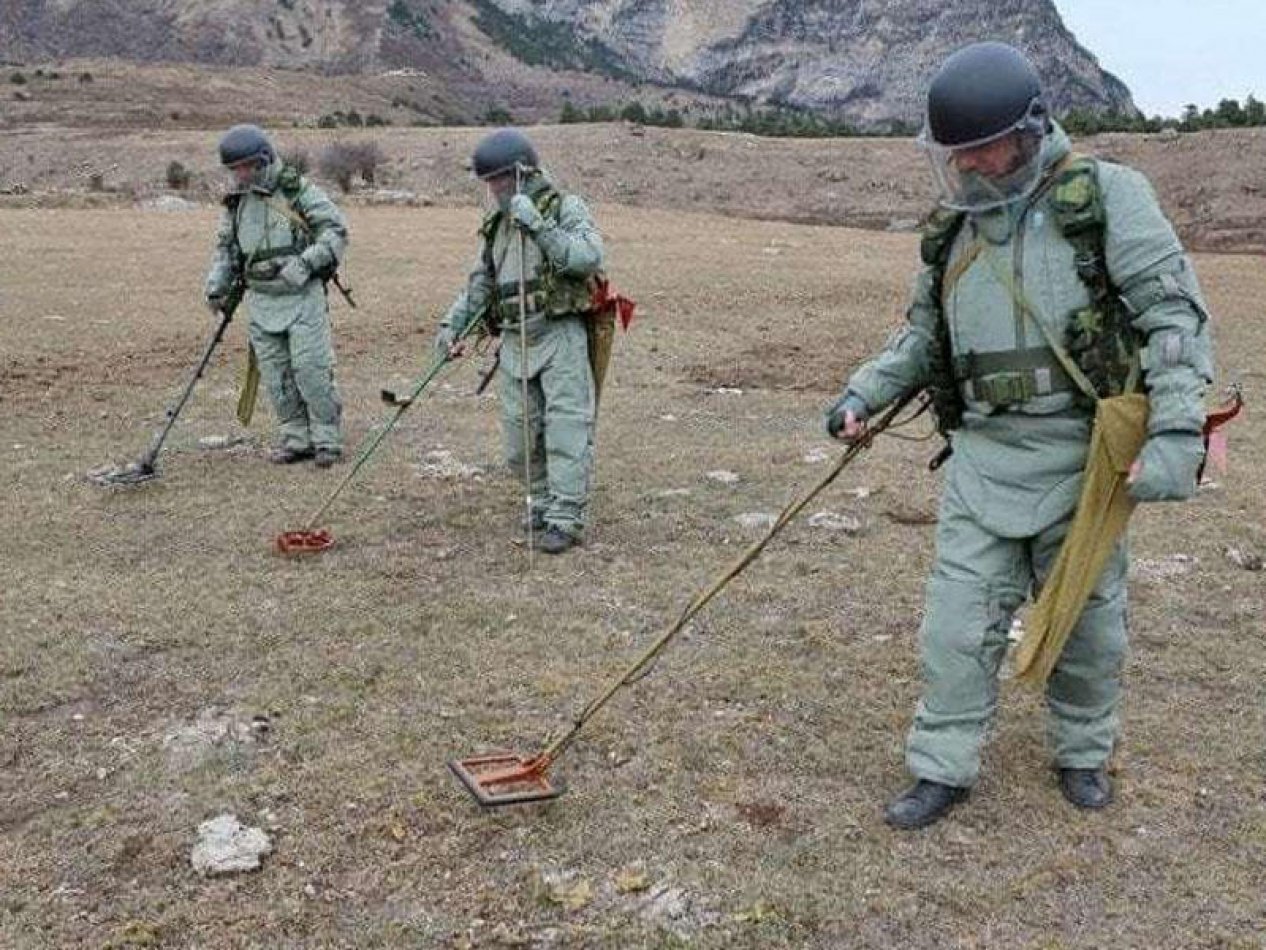
It became known that from June 21 to June 25, some 84 anti-personnel, 74 anti-tank mines, 134 unexploded ordnance were found in the liberated territories. So, in one week, 158 mines were neutralized, which means that at this rate, it will take 11.8 years to demine Aghdam district alone, Chairman of the "Democracy and Prosperity of Azerbaijan" movement, economist Gubad Ibadoglu wrote on his Facebook page. At the same time, he referred to the figures presented in the recent report of the Mine Action Agency of Azerbaijan (ANAMA) and the mining maps of the Aghdam district, transferred to Azerbaijan by Armenia.

But how substantiated is this statement by Ibadoglu?
Azerbaijani Foreign Ministry said that according to the agreement reached, on June 12, 2021, in exchange for Armenia's providing maps of 97,000 anti-tank and anti-personnel mines placed in the Aghdam district, 15 arrested Armenians were transferred with the participation of representatives of Georgia to the Armenian side at the Azerbaijan-Georgia border.
Now let’s check the logic and reliability of the calculations, according to which detection and neutralization of such a number of explosive devices may take 11.8 years.
Taking into account the fact that there are 365 days in a year (excluding leap years), it turns out that the declared period equals to 4,307 days.

The pace of demining by ANAMA indicated in the latest report is 158 mines in 5 days, or 31.6 per day.

Now we divide the total number of mines marked, according to the Azerbaijani side, on the maps handed over by Armenia by this figure, and we get the number of days, according to the given parameters, which, conditionally, will be required for the complete demining of the district.

But 3,069 days equal not to 11,8 years, but less than 8.5 years.
Let’s record as an intermediate result that while checking Gubad Ibadoglu’s calculations of the mine clearance period in the Aghdam district a significant error of about three years was observed.
However, how true is this method of this analysis? After all, it is obvious that even if the work on mine clearance is carried out by robots, and not by people, weather conditions, terrain, density, the level of complexity of the laid explosive devices will certainly affect the speed of mine clearance.

The Armenian side views this act as situational, directly related to the return of 15 Armenian servicemen held by Azerbaijan, while the exchange of minefield maps by the belligerents after the cessation of hostilities is unambiguously dictated by international law.
This issue is governed by the Geneva Convention on Prohibitions or Restrictions on the Use of Certain Conventional Weapons Which May Be Deemed to Be Excessively Injurious or to Have Indiscriminate Effects dated October 10, 1980.
According to Articles 7 and 9 of Additional Protocol II of this Convention on Prohibitions or Restrictions on the Use of Mines, Booby-Traps and Other Explosive Devices, information on mined territories, areas, booby-traps and other devices of this type must be recorded and stored.

After the cessation of active hostilities, in order to protect civilians from danger in mined areas, the parties to the conflict should transfer to each other or to the secretary general of the United Nations this information, that is, registration documents on mined areas.
The convention under consideration and the protocols annexed to it are interrelated with the 1949 Geneva Convention for the Protection of War Victims.

In February this year, it was reported that the Military Factory and Shipyard Management (ASFAT) MEMATT (Mechanical Mine-Clearing Equipment) was successfully tested in Azerbaijan.
The testing and operation of the mine clearance devices delivered to the country were monitored by the head of the engineering and fortification service of the Ministry of Defense of Azerbaijan, Major General Anar Kerimov and representatives of ASFAT. Kerimov noted that in general, 20 mechanical means of demining will be delivered from Turkey to Azerbaijan in stages.
Also, according to Israeli expert on international relations Mikhail Finkel, his country will soon transfer unique mine clearance technologies to Azerbaijan. He said that according to the information he has, Israel is working to provide Azerbaijan with the most advanced technologies for demining the liberated territories. These technologies involve the use of a drone that will scan the thickness of the earth and, having found the location of the mine, will send the appropriate information to the operator. This means that it will be possible to get an instant map of mined areas. Currently, the last tests are being carried out, and very soon this unique Israeli technology will arrive in Azerbaijan.
In May this year, ANAMA reported that after the autumn aggravation of the Karabakh conflict, that is, in seven months, 2,051 hectares of territory and 18,600 mines and unexploded ordnance were cleared. Now let's imagine what issuing a mine map on Aghdam, on the territory of which about 97,000 mines are planted, means, if we take into account that the area of Aghdam is 115,000 hectares.
Obviously, the presence of maps of the location of minefields will make it possible to multiply the pace of demining.
As of March this year, ANAMA assumed that it would take 5-6 years to clear unexploded ordnance on the battlefields, and 10-13 years to clear mines.
Thus, the considered information gives reason to believe that despite the minefield maps in the Aghdam region, the latest foreign equipment and technologies obtained by Azerbaijan, today it is impossible to talk about specific timeframe for the complete clearance of mines and unexploded shells of the territories liberated from the Armenian occupation, and in particular the Aghdam district.
As for the forecast that full mine clearance in Aghdam will take 11.8 years, neither the calculations that formed its basis, nor their very principle are relevant.




















